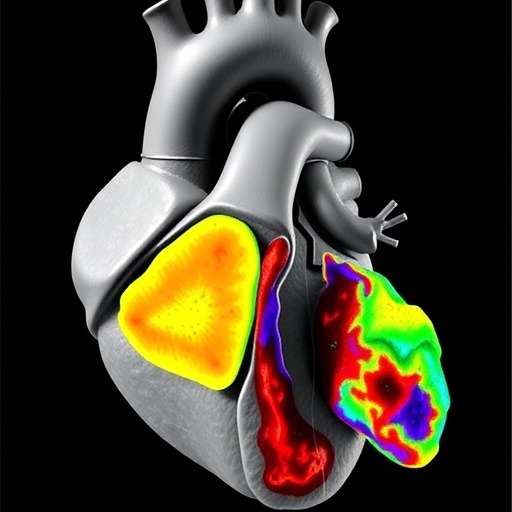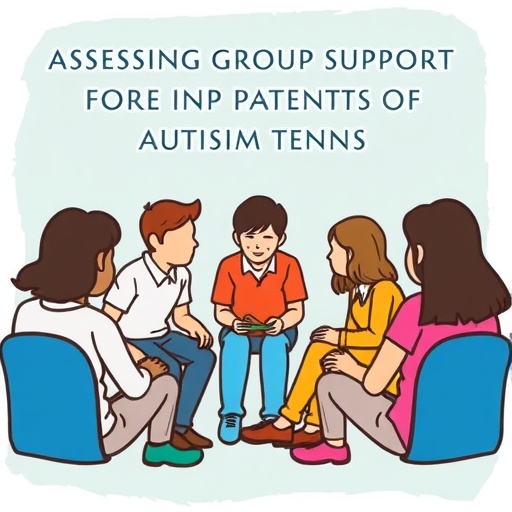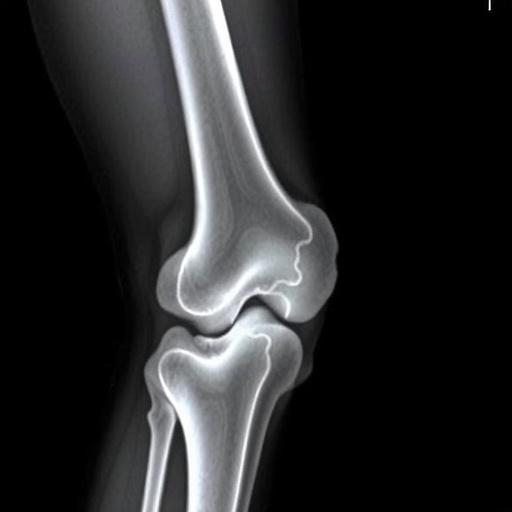PROTECT YOUR DNA WITH QUANTUM TECHNOLOGY
Orgo-Life the new way to the future Advertising by AdpathwayIn a groundbreaking study published in the journal Discover Artificial Intelligence, researchers have delved into the intricate world of the blood-brain barrier (BBB)—an essential protective shield that regulates the flow of substances between the bloodstream and the central nervous system. The study, led by a team of innovative scientists including Grant, Machado Reyes, and Yang, has illuminated how artificial intelligence (AI) and machine learning (ML) can enhance our understanding and prediction of BBB permeability. This research is pivotal, particularly in the context of treating neurological diseases where drug delivery across this barrier presents significant challenges.
The blood-brain barrier is often described as a fortress, tightly controlling what enters the brain. This is crucial because the brain is highly sensitive to changes in its environment, and substances that could be harmful are effectively kept at bay. However, this strict regulation also poses a challenge for drug development, particularly for conditions such as Alzheimer’s disease, multiple sclerosis, and brain tumors. The research team’s meta-review emphasizes that traditional methods to understand and predict BBB permeability are often inadequate, leading to a bottleneck in the development of effective treatments.
By implementing AI and ML techniques, the researchers conducted a comprehensive analysis of existing literature and existing models that have attempted to address BBB permeability. Their findings reveal that AI can significantly enhance the accuracy with which researchers predict the permeability of drugs through the BBB. This is accomplished through algorithms capable of processing vast datasets far more efficiently than human analysts could ever hope to achieve, identifying patterns that may escape traditional methodologies.
The study also underscores the importance of data quality and diversity in model training. AI models that draw upon a more comprehensive dataset, inclusive of chemical properties, biological interactions, and even patient demographics, are more likely to yield reliable predictions. This concern for data quality is vital for the production of models that not only work in theoretical conditions but can also be applicable in real-world scenarios, offering practical guidance for drug developers.
A particularly compelling aspect of this research is the emphasis on interdisciplinary collaboration. The authors advocate for a merging of expertise from computational science, pharmacology, and neuroscience to fully harness the potential of AI in predicting BBB permeability. They argue that such interdisciplinary approaches could break down silos that often impede innovation in medical science, leading to breakthroughs that could save countless lives.
Moreover, this research does not merely present AI as a tool but also highlights the ethical implications of its use in healthcare. As AI begins to revolutionize medical predictions, questions arise regarding the transparency of these models. The researchers call for rigorous ethical guidelines and validation processes to ensure that AI applications in this field are both reliable and trustworthy. Only through responsible use can the medical community fully realize AI’s potential in addressing complex challenges like BBB permeability.
The implications of this research extend beyond neurology; they touch upon broader applications in healthcare and pharmacology, suggesting that AI could facilitate faster and more effective drug development across multiple domains. As the demand for personalized medicine grows, these predictive models could pave the way for treatments tailored to individuals based on their unique physiological characteristics, significantly altering therapeutic strategies.
In their exploration of future directions, the research team outlines several pathways for subsequent investigation that could further enhance our grasp of BBB permeability. For instance, they recommend integrating real-time monitoring technologies that track how substances traverse the BBB in clinical settings, offering insights that could refine both AI models and real-world applications.
The convergence of AI with traditional methodologies has the potential to streamline the drug development process systematically. This study advocates for a shift in how researchers approach the perennial challenge of drug delivery to the brain, positing that the time is ripe for a leap forward fueled by the capabilities of AI and ML. The authors call for continued investment in technical infrastructure that can support these advanced analysis techniques and encourage collaboration that transcends current disciplinary boundaries.
Furthermore, the need for rigorous validation of AI-induced predictions cannot be understated. The researchers emphasize the necessity of creating standardized benchmarks and validation datasets that future studies can utilize. This would establish a shared framework upon which subsequent researchers can build, fostering progress while maintaining scientific rigor.
The vision articulated by Grant, Machado Reyes, and Yang embodies a future in which AI not only enhances our understanding of biological barriers like the BBB but also transforms the landscape of medical research and treatment paradigms. By arming pharmaceutical developers with enhanced predictive capabilities, we move closer to a reality where brain-targeted therapies become more commonplace, potentially leading to cures for some of the most debilitating neurological disorders.
In conclusion, this pioneering study represents a pivotal moment in bridging the gap between artificial intelligence and medical science. The team’s insightful analysis and constructive recommendations lay a blueprint that could significantly accelerate advancements in understanding BBB permeability. As we stand at the cusp of this transformative era in medicine, it is clear that the integration of cutting-edge technology and biological research could change the lives of millions around the world facing neurological health challenges.
By articulating these findings, the researchers not only celebrate the advancements in AI and ML but also call for an ongoing commitment to ethical practices, interdisciplinary collaboration, and a relentless pursuit of scientific discovery. The future of medicine may very well hinge on how effectively we can leverage these tools to navigate the complexities of the human brain.
Subject of Research: Blood-brain barrier permeability prediction using artificial intelligence and machine learning.
Article Title: Blood brain barrier permeability prediction with artificial intelligence and machine learning: a meta-review and future directions.
Article References:
Grant, N., Machado Reyes, D., Yang, Z. et al. Blood brain barrier permeability prediction with artificial intelligence and machine learning: a meta-review and future directions.
Discov Artif Intell 5, 254 (2025). https://doi.org/10.1007/s44163-025-00494-4
Image Credits: AI Generated
DOI: 10.1007/s44163-025-00494-4
Keywords: Blood-brain barrier, artificial intelligence, machine learning, drug delivery, predictive modeling, interdisciplinary research, ethical implications, personalized medicine.
Tags: addressing neurological disorders with AI solutionsadvancements in understanding BBB regulationAI and machine learning in neuroscienceblood-brain barrier as a protective shieldchallenges in drug delivery for neurological diseasesenhancing drug therapies for brain diseasesfuture of AI in pharmacology and neurotherapeutics.implications of AI in medical researchinnovative research in BBB studiesmeta-review of blood-brain barrier researchpredicting blood-brain barrier permeabilitytraditional methods vs. AI in drug development


 2 hours ago
6
2 hours ago
6





















 English (US) ·
English (US) ·  French (CA) ·
French (CA) ·